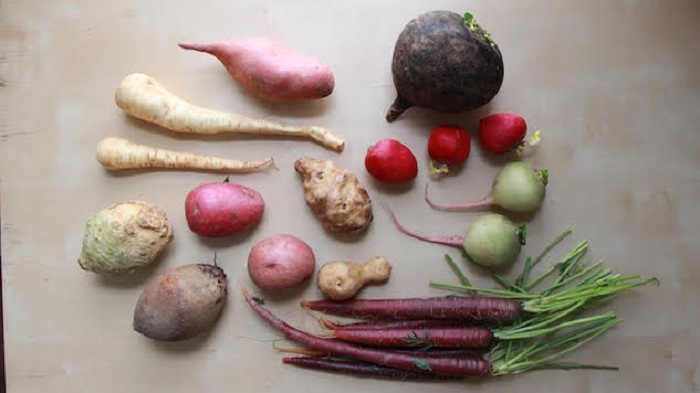For the new report, published in The Lancet, researchers analyzed health data and diet reports from more than 135,000 people across five continents who were followed for about seven years. When the researchers compared how much fruit, vegetables, and legumes people ate with mortality rates, they found that those who reported eating three to four combined servings a day were 22% less likely to die during the study compared to those who reported eating less than one serving a day.
And the benefits stopped there: people eating more than four servings daily did not enjoy a bigger drop in mortality rates. The results remained strong even after the scientists adjusted for factors that could affect death rates such as age, gender, health status, physical activity, and meat and grain consumption.
But the researchers' definition of a serving size was slightly larger than in previous research—so the difference between three servings in this study (375 grams) and the commonly recommended five servings (400 grams) is actually very small. In reality, says lead author Victoria Miller, a doctoral student at McMaster University, “we’re fairly consistent with current dietary guidelines.”
For reference, a medium-sized apple is about 180 grams. U.S. dietary guidelines, it's worth pointing out, no longer use "grams" or "servings" to define how much produce people should eat. They recommend between 1-1/2 to 2 cups of fruit, and between 2 to 2-1/2 cups of vegetables a day, depending on age and gender. That works out to about the same amount in grams, but is easier for people to measure.
Still, Miller says that the study also shows that you may not need 400 to 800 grams of fruit and vegetables a day to achieve significant health benefits, since people eating more didn't enjoy additional decreases in their risk of early death. And that's an important message for people around the world who don’t have access to produce on a regular basis, and may not be able to eat five servings on most days. “We’re emphasizing that individuals in low- or middle-income countries who have affordability issues should focus on eating at least three to four servings per day,” she says.
In fact, the authors say, recommendations for fruit and vegetable intake have largely been based on data from Europe and the United States. Even in these studies, “the apparent benefits of fruit and vegetable consumption vary substantially,” they write in the paper—and there’s very little research at all on potential health benefits for people in the Middle East, South America, Africa, and south Asia, where fresh produce is more limited and more expensive.
That's why the Miller and her colleagues believe that guidelines based on European and U.S. studies might not be suitable for other regions of the world. “Even a small reduction in the recommendation from 400 g to 375 g a day may have important implications on household spending and food security on poorer countries,” they write in the study.
The study also found that consumption of raw vegetables was strongly associated with reduced risk of death, while eating cooked vegetables had a more modest benefit. Most guidelines do not distinguish between the two, and in some Asian and African countries, raw vegetables are rarely eaten at all. Based on these findings, the authors say that raw vegetables should also be emphasized over cooked ones.
Meanwhile, European and North American populations could benefit from eating more legumes—like black beans, lentils, peas, chickpeas, and black-eyed peas—that are frequently consumed in other parts of the world. And, says registered dietitian Cynthia Sass, contributing nutrition editor for Health magazine and author of Slim Down Now, there are still plenty of reasons to get more than the minimum requirement of produce and legumes per day.
“If you eat fewer than four servings a day, it’s good to know that getting four may be enough to significantly reduce death risk,” says Sass, who was not involved in the study. “But it’s important to strive for not just a longer life or lower death risk, but also a better quality of life while we’re living.”
A higher produce intake has been associated with leanness, more energy, positive mood, better sleep, and creativity, says Sass, and it’s also important for sustaining a strong immune system and maintaining lean muscle mass as you age. A plant-focused diet has also been linked to a reduced risk of cancer and other chronic diseases, and may play a role in maintaining a healthy gut microbiome, which can affect the risk of chronic disease and obesity.“If you're not yet eating four servings a day every day, aim for four,” says Sass. “But don't stop there, thinking that extra servings won't benefit you. They will, in ways that impact your every day life.”
More about: #Vegetable
















































